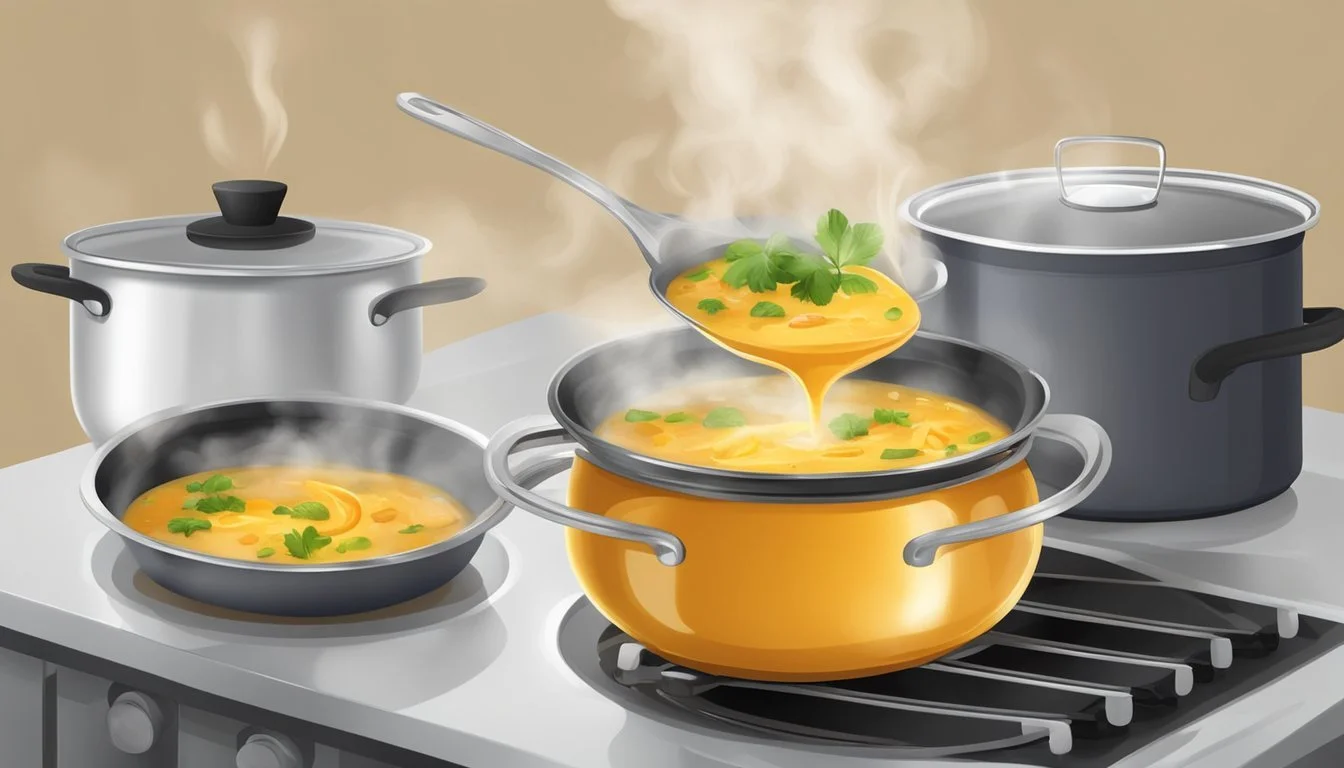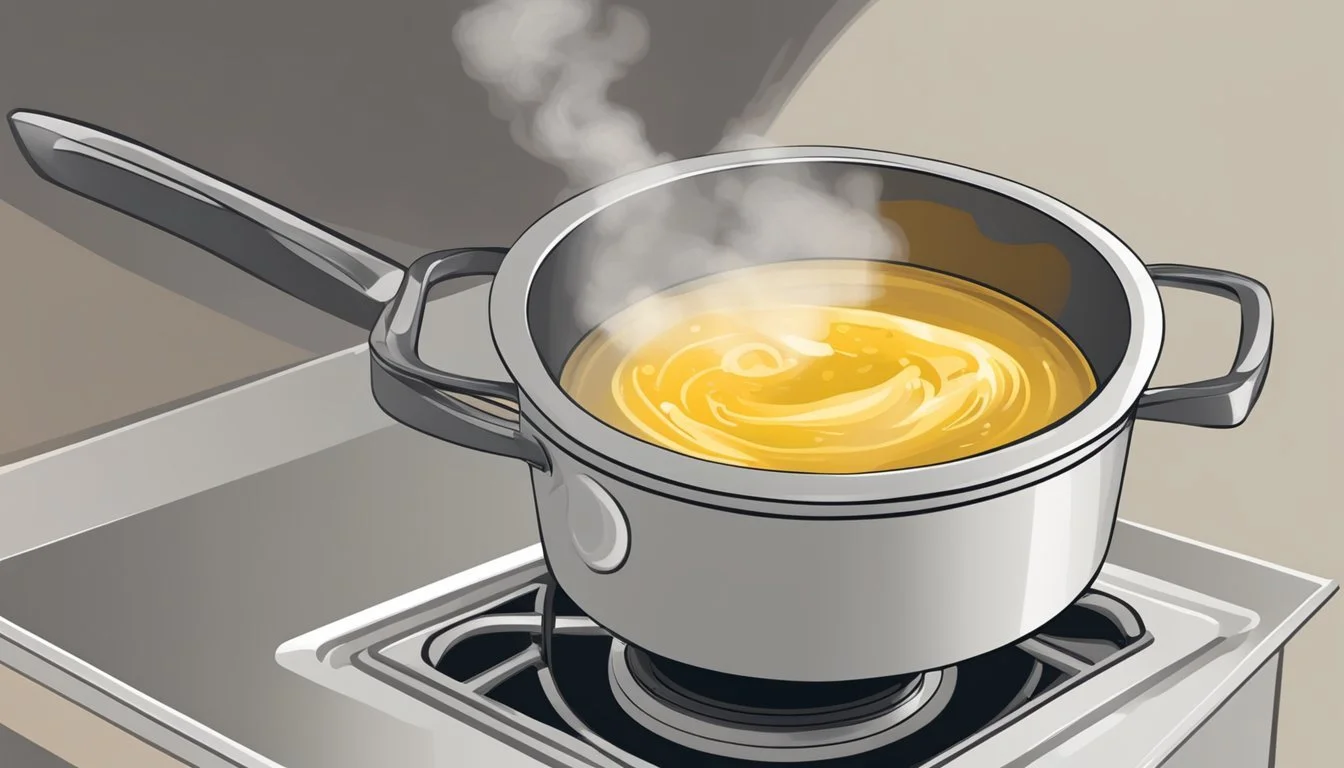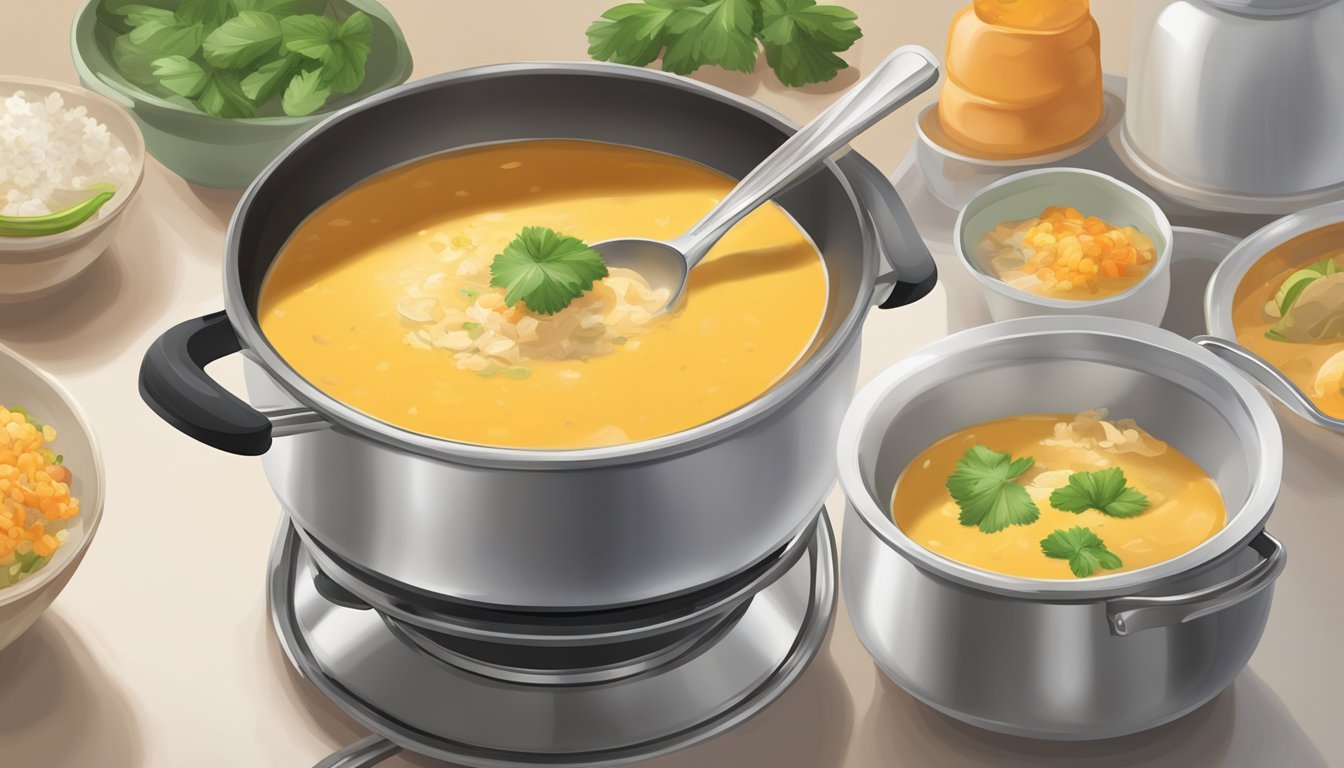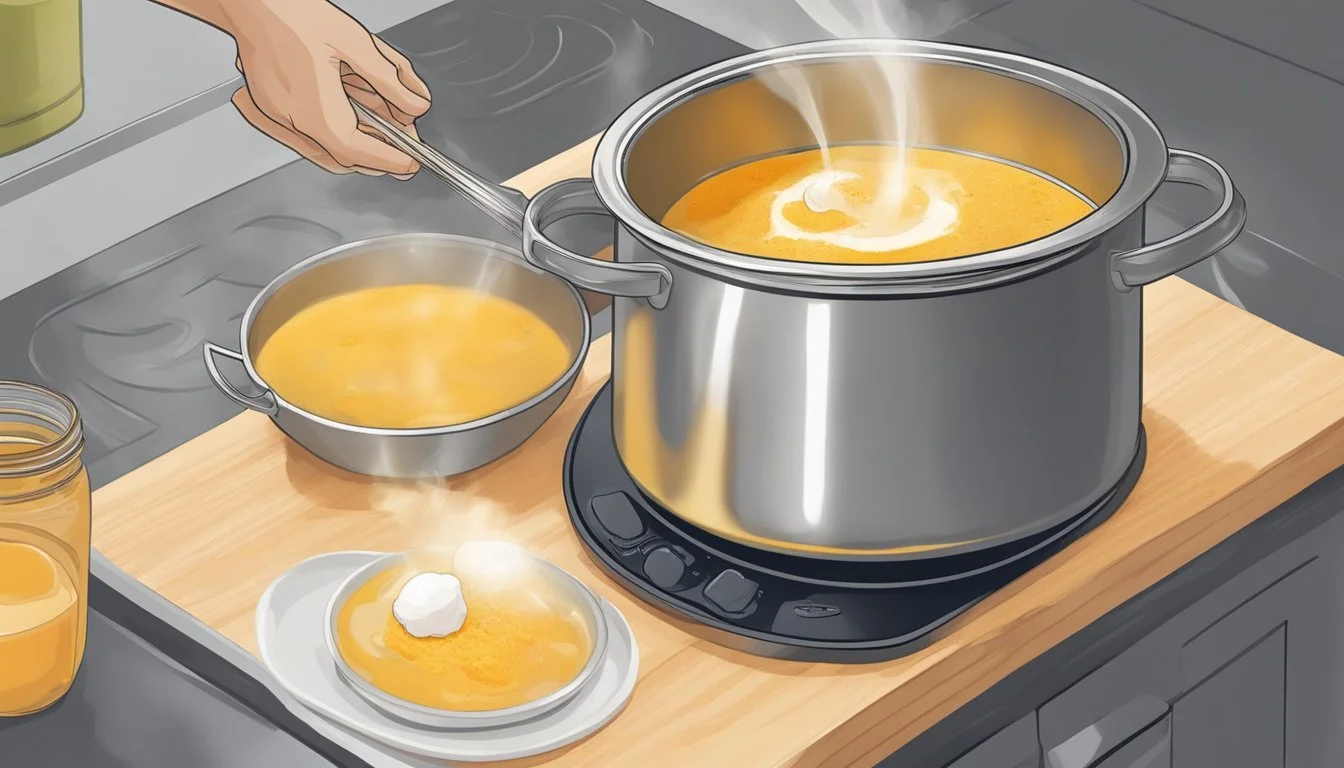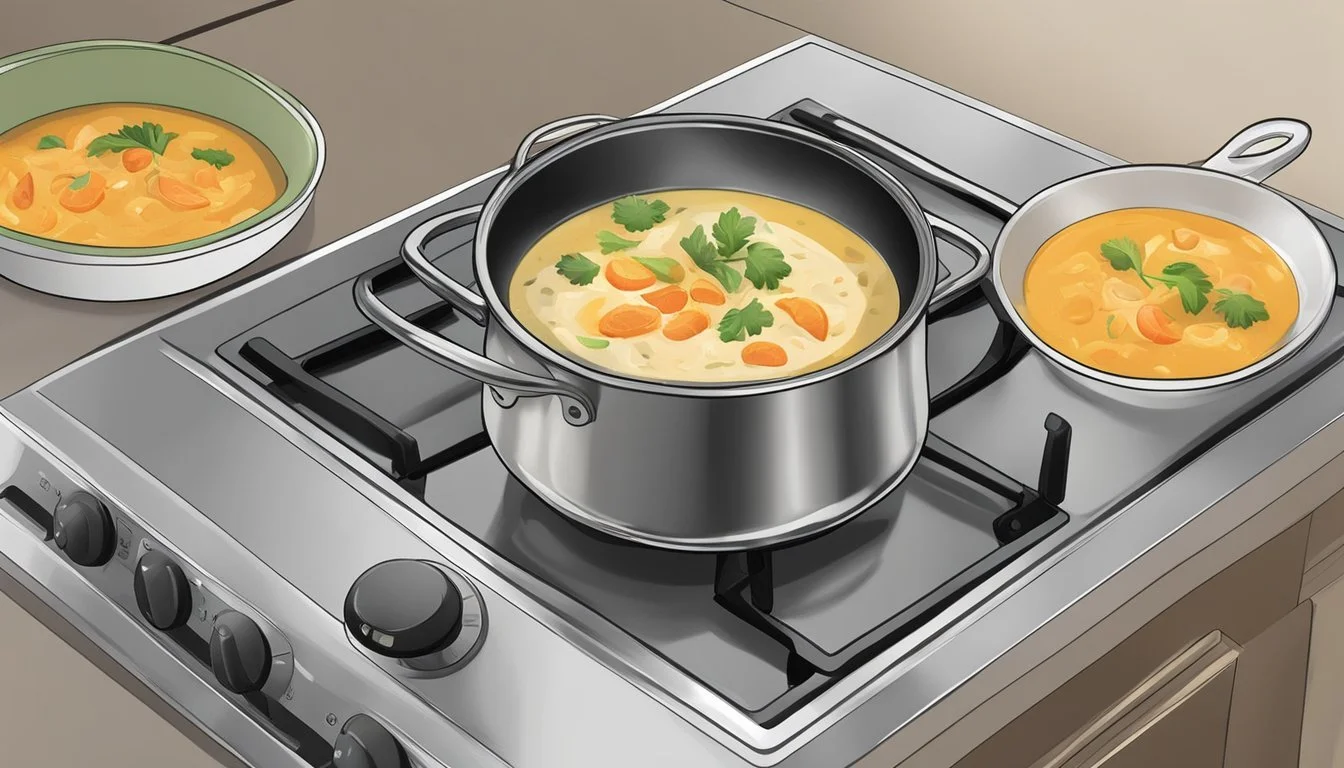Best Way to Reheat Coconut Curry Soup
Ensuring Creaminess and Flavor Retention
Coconut curry soup is a delicate and flavorful dish that can be enjoyed both freshly made and as leftovers. The key to reheating coconut curry soup successfully lies in preserving its creaminess and the depth of its flavors. The composition of coconut milk, which separates upon high heat, calls for gentle reheating to maintain the emulsion of the liquid and avoid a grainy texture. As the ingredients such as spices, herbs, and coconut milk have already fused flavors over time, the reheating process should not only reheat the soup but also capture and emphasize the blend of flavors that have further developed.
The approach to reheating needs to be gentle and even, to avoid overcooking the ingredients while reinvigorating the warm, complex essence of the soup. Coconut curry soup usually contains chicken, vegetables, and an array of spices; they all require careful warming to ensure the soup's components do not become overcooked or lose their textural integrity. The right method will heat the soup thoroughly without letting the vegetables turn mushy or allowing the proteins to become tough, which would alter the intended experience of the dish.
Understanding Coconut Curry Soup
Coconut curry soup is a sumptuous blend of flavors and textures that hinges on the balance and quality of its ingredients. It is a dish that can cater to a wide array of dietary preferences, with variations including chicken, fish, shrimp, or tofu.
Key Ingredients
Coconut Milk: Essential for creaminess and sweet, nutty flavor.
Curry Paste: Adds complexity with a blend of spices. Commonly used are red, green, or yellow Thai curry pastes.
Protein: Types include chicken, fish, shrimp, or tofu; each contributes a unique texture.
Vegetables: Often includes carrots, bell pepper, and onion for crunch and sweetness.
Aromatics: Garlic and ginger infuse the soup with pungent flavors.
Acid: Lime juice or zest brightens the soup with a tangy note.
Herbs: Cilantro or basil add a fresh, aromatic finish.
Nutritional Profile
A typical serving of coconut curry soup may contain the following:
Calories: Ranges based on ingredients, but it's moderate in calories.
Fat: From coconut milk, which provides a good source of saturated fats.
Protein: Varies with the choice of protein; chicken, fish, or tofu are good sources.
Carbohydrates: Largely from vegetables and the addition of any noodles or rice.
Fiber: Supplied by vegetables and specific ingredients like tofu.
Vitamins & Minerals: Potentially rich in vitamins A and C from vegetables like carrots and bell peppers.
By isolating the key components and understanding the nutritional impact, one can appreciate the depth of coconut curry soup—a dish that is as nourishing as it is flavorful.
Preparation and Storage Tips
To ensure coconut curry soup retains its creaminess and flavor, following precise storage and preparation guidelines is crucial. Proper handling before refrigeration or freezing can significantly impact the soup's quality upon reheating.
Storing Leftovers Correctly
Leftover coconut curry soup should be allowed to cool to room temperature before storage. It's important to store it in the refrigerator within two hours of cooking to maintain safety and quality. An airtight container is essential to preserve the taste and prevent odor transfer. Ideally, the soup should be consumed within three to four days when stored at or below 40°F (4°C) in the refrigerator to ensure optimal flavor.
Cooling: Cool to room temperature.
Timing: Store within two hours of cooking.
Temperature: Keep at or below 40°F (4°C).
Container: Use an airtight container.
Shelf-life: Consume within three to four days.
Freezing and Thawing Guidelines
For longer storage, the soup can be frozen. Freeze in an airtight container or heavy-duty freezer bags to protect the soup's integrity. Ensure that the container is not filled to the brim, as liquids expand when frozen, and label with the date of freezing. To thaw the frozen coconut curry soup, transfer it to the refrigerator and allow it to slowly defrost overnight. If in a hurry, one can submerge the container in cold water to speed up the process. Always check that the internal temperature of the thawed soup reaches 165°F (74°C) after reheating for safety purposes.
Freezing:
Use airtight container or freezer bags.
Leave space for expansion.
Label with freezing date.
Thawing:
Defrost in refrigerator overnight, or
Use cold water bath for quicker thawing.
Reheating:
Internal temperature should reach 165°F (74°C).
Reheating Fundamentals
Effective reheating maintains the coconut curry soup's rich flavor and velvety texture. One must reheat gently to avoid separating the fats in the coconut milk and to distribute the spices evenly throughout the soup.
Reheating for Optimal Flavor
To ensure the flavor of coconut curry soup is as close to its original taste as possible, they should reheat it slowly and gradually. The temperature should be kept low to medium, ideally between 165°F to 175°F, to help the spices release their flavors without becoming bitter. It's also important to:
Stir continuously: This ensures even distribution of heat, allowing the herbs and spices to meld together effectively.
Cover the pot: To trap the steam and keep the aromatic compounds within the soup.
Avoid boiling: As boiling can cause the flavors to become muted and lead to a loss of some subtle notes.
Preserving Texture and Creaminess
Texture is key in coconut curry soup, where the creaminess of the coconut milk can be easily compromised if not handled with care. To preserve texture, they should:
Reheat on the stovetop: A controlled stovetop heat allows for gradual reheating, which helps maintain the integrity of the coconut milk.
Avoid microwave use: As uneven heating can cause the fat to separate from the liquid, creating an undesirable texture.
Add additional coconut milk or broth: If the soup has thickened in the fridge, loosening it with a little more liquid during reheating can help restore creaminess.
Reheating Coconut Curry Soup
To maintain the creaminess and flavor of coconut curry soup when reheating, it's important to choose a method that gently warms the soup without overcooking the ingredients. The key is to heat it to the ideal internal temperature for serving, which is generally around 165°F (74°C).
Stovetop Method
Using a large saucepan on the stovetop is a preferred method for reheating coconut curry soup. One should pour the soup into the saucepan and heat it on a medium setting. It's crucial to stir the soup occasionally to prevent sticking and to ensure evenly distributed heat. Adjust the heat to avoid rapid boiling, which can break down the coconut milk and affect the soup's consistency.
Microwave Technique
Reheating curry in the microwave should be done with care to prevent the soup from heating unevenly. Place the curry in a microwave-safe dish and cover it with a microwave-safe lid or vented plastic wrap. Use the microwave reheating function or set the microwave to a medium power level. Stir the soup at least once during the reheating process to ensure even heating.
Oven Reheating Approach
When using an oven to reheat curry, it's wise to transfer the soup into an oven-safe dish. Cover the dish tightly with aluminum foil to retain moisture. Preheat the oven to around 350°F (180°C) and warm the soup for about 15-20 minutes. Checking periodically and stirring can help prevent overheating and maintain the soup's texture and flavor.
Considerations for Different Variations
When reheating coconut curry soup, paying attention to the main ingredients is crucial as it influences the method and care required. Each variation, be it chicken and fish curries or vegetarian and vegan options, has specific needs to ensure the creaminess and flavor are maintained.
Reheating Chicken and Fish Curries
Chicken curries, especially those with delicate proteins like rotisserie chicken or chicken breast, should be reheated gently to avoid drying out the meat. One should ideally use low heat and add a splash of chicken broth if the soup appears too thick. It helps preserve the moisture and enrich the soup's flavor. For fish curries, similar caution is necessary as fish tends to overcook easily. A good practice is to heat the sauce first and then add the fish just before serving to warm it through.
Protein Method Added Liquid Heat Chicken Stovetop Chicken broth Low Fish Stovetop None needed; add fish later Low
Handling Vegetarian and Vegan Options
Vegetarian and vegan coconut curry soups (What wine goes well with soups?) often contain a variety of vegetables like broccoli, spinach, kale, and mushrooms along with tofu as the primary protein. These ingredients should not be overcooked to maintain their integrity and nutritional value. When reheating, one should do so until the vegetables are just heated, ensuring they retain their texture and color. If onions are used, such as yellow onion, they should retain some of their crispness to provide a slight contrast to the creaminess of the soup.
For tofu, which can become rubbery if mishandled, the approach should be to reheat it in the soup without letting it boil. Adding it after the vegetables have warmed allows for the tofu to absorb the flavors without losing its texture.
Tofu: Add after vegetables, avoid boiling
Vegetables: Heat just until warm, avoid overcooking
Accompaniments and Serving Suggestions
For those enjoying coconut curry soup, selecting the right sides and garnishments ensures a dining experience that is both balanced and enhanced in flavor. Attention to pairing and complementing the soup’s rich and creamy profile is key.
Best Sides for Coconut Curry Soup
Rice: Jasmine or basmati rice is the classic companion, offering a subtle flavor that complements the creamy sweetness of coconut curry soup.
Rice Noodles: For a gluten-free option, rice noodles provide a delightful texture that pairs excellently with the soup’s consistency.
Garnishments to Enhance Flavor
Fresh Ginger: A hint of finely chopped fresh ginger can brighten the soup and introduce a zesty note.
Lime Juice: A squeeze of lime juice adds a refreshing citrusy accent, balancing the creaminess.
Thai Basil: Thai basil leaves give a pleasant anise-like flavor and are visually appealing.
Red Pepper Flakes: For those who desire a bit of heat, a sprinkle of red pepper flakes can offer a subtle kick.
Cilantro: Chopped cilantro infuses a crisp herbal taste that is particularly invigorating against the rich backdrop of the soup.
The Role of Condiments
When reheating coconut curry soup, condiments play a critical role in restoring or enhancing the original flavors that might have diminished during cooling and storage.
Incorporating Spices and Herbs
Spices and herbs are essential in returning the zest to coconut curry soup. When the heated aromas of ginger and basil meet the richness of coconut milk, they revive the soup's aromatic profile. For soups that have lost their spicy edge, a pinch of curry powder—whether it's red, green, or yellow curry paste—can reintroduce the desired warmth and complexity. It's advisable to start with smaller quantities and taste as you go since these spices can quickly overpower.
Ginger: Add a fresh, grated amount to brighten the flavor.
Basil: Tear fresh leaves and stir in at the end for a burst of freshness.
Curry Paste (Thai red, green, or yellow): Stir in a small amount to intensify flavor.
Utilizing Sauces
The use of sauces such as fish sauce or additional curry paste drastically enhances the depth of flavor in a coconut curry soup without altering its consistency. They should be added sparingly and mixed thoroughly, as they can easily dominate the soup's taste.
Fish Sauce: A few drops will add umami and saltiness.
Curry Paste: A teaspoon can enrich the curry base.
Condiments, whether in the form of dry spices or liquid sauces, are pivotal in not just reheating, but also reinvigorating the soup to ensure every spoonful is as enjoyable as the first.
Advanced Techniques and Tips
The key to reheating coconut curry soup while preserving its creaminess and flavor lies in gentle and even heat distribution. Utilizing a Dutch oven or an Instant Pot can offer controlled and consistent reheating conditions, thus maintaining the soup's texture and taste.
Using a Dutch Oven for Reheating
A Dutch oven provides excellent heat retention and distribution, making it ideal for reheating creamy soups such as coconut curry. One should reheat the soup over low to medium heat to prevent the coconut milk from separating. Follow these steps:
Preheat the Dutch oven on the stove at a low setting.
Add the coconut curry soup and cover with the lid.
Heat gently, stirring occasionally to ensure even warming throughout.
Monitor the soup to avoid overheating, which can affect the soup’s consistency.
Instant Pot Reheating
The Instant Pot's precise temperature control settings make it another suitable option for reheating coconut curry soup. The 'Keep Warm' mode is particularly useful for bringing the soup to serving temperature without overheating. To reheat using an Instant Pot:
Transfer the soup into the Instant Pot.
Cover with the lid and ensure the valve is set to “Sealing”.
Select the 'Keep Warm' setting and allow the soup to gradually reheat.
Stir the soup occasionally to distribute the heat consistently throughout the soup.
By reheating your coconut curry soup using these methods, you can help ensure that the flavors stay vibrant and the texture remains as intended.
Final Touches
After carefully reheating the coconut curry soup, enhancing its creaminess and flavor comes down to judiciously applying final touches. To begin, they should consider the acidity balance. A squeeze of lime juice can bring a bright note, cutting through the richness of the coconut with a welcoming tang. This step must be done just before serving, as the citrus can become bitter if added too early or reheated.
They should also pay attention to the seasoning. A pinch of sea salt can elevate the inherent flavors of the curry. However, one must be cautious not to over-salt; it is always better to add less initially and adjust according to taste. Similarly, a dash of freshly ground pepper adds a subtle heat and depth, particularly if they use a pepper mill for freshness.
In terms of serving size, it's important to dish out appropriate portions. An overly filled bowl may overwhelm the diner, whereas too little may leave them unsatisfied. They should aim for a happy medium that allows the soup’s richness to satisfy without being excessive.
Finally, an artful garnish not only adds to the visual appeal but can also introduce a textural contrast or a complementary flavor. They might sprinkle a handful of chopped fresh herbs or a few slivers of red chili for color and zing.
By adhering to these considerations, they can present a coconut curry soup that's as delightful to the eyes as it is on the palate.
Safety and Best Practices
When reheating coconut curry soup, one should prioritize safety and the maintenance of quality. This involves careful inspection for spoilage and adhering to proper temperature guidelines to ensure both safety and the preservation of the soup’s creaminess and flavor.
Checking for Spoilage
Before reheating, inspect the soup:
Look: Check for any signs of mold or discoloration.
Smell: A sour or off odor is a reliable indicator that the soup should not be consumed.
If any signs of spoilage are present, the leftover soup should be discarded to avoid foodborne illnesses.
Maintaining Proper Temperature
Storage:
Store leftover coconut curry soup in the refrigerator within two hours of cooking to prevent bacterial growth.
Use an airtight container to preserve quality and prevent contamination.
Reheating:
Reheat the soup to an internal temperature of 165°F (74°C) to ensure safety.
Use a food thermometer to check the temperature.
To preserve creaminess while reheating, avoid bringing the soup to a boil as this can cause the coconut milk to separate. Instead, gently heat the soup over low to medium heat, stirring occasionally. If using a microwave, cover the soup and heat in short intervals, stirring in between to distribute heat evenly.
Additional Resources
This section is dedicated to providing resources for those looking to refine their approach to reheating coconut curry soup or seeking inspirational recipes. It includes curated links to recipe inspiration and ways to engage with culinary communities on social media.
Recipe Inspiration
For chefs and food enthusiasts looking to explore different variations of coconut curry soup or seeking the perfect recipe, here are some specific resources:
Wholesome Yum: They offer a 20-minute Coconut Curry Soup recipe that's ideal for a quick and flavorful meal.
The Wooden Skillet: This site provides a detailed recipe for a coconut curry soup that includes a variety of vegetables and shrimp, making it a hearty option.
Leftover Reinvention: Beef stir-fry or takeaway curry can be transformed into a new meal. Using leftover dishes as a base and adding spices can elevate the dish's flavor profile.
Social Media
Social media platforms are excellent for connecting with fellow culinary enthusiasts and discovering new ways to prepare and reheat coconut curry soup.
Instagram: A popular platform where professional chefs and amateurs alike share their creations. Follow hashtags like #CoconutCurrySoup for vibrant images and recipes from diverse culinary traditions.
Culinary Forums: Online forums and communities are where one can ask questions about reheating techniques or recipe adjustments, especially for dishes such as leftover beef stir-fry or takeaway curries.

